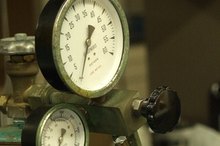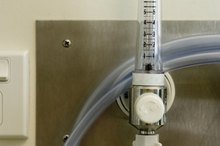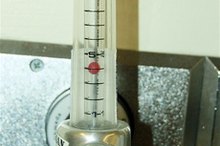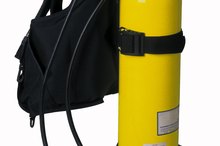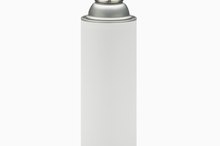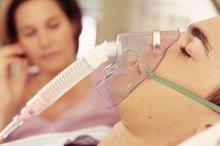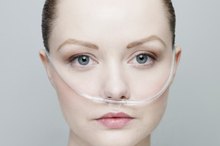Rebreather Vs. Non-Rebreather Mask
Oxygen is vital to human life. It makes up about 21 percent of the air (the rest is nitrogen and other gases). In emergency situations, medical professionals use special types of oxygen masks to help patients breathe more easily. The two types of masks you will see are rebreather and non-rebreather masks.
Rebreather Mask
A rebreather mask has a soft plastic reservoir bag attached at the end that saves one-third of a person’s exhaled air, while the rest of the air gets out via side ports covered with a one-way valve. This allows the person to “rebreathe” some of the carbon dioxide, which acts as a way to stimulate breathing.
Non-Rebreather Mask
Dangers of Home Oxygen Use
Learn More
A non-rebreather has several one-way valves in the side ports. This type of mask also has a reservoir bag attached, but the bag has a one-way valve that prevents the exhaled carbon dioxide from getting into the reservoir. This type of mask does not allow for the rebreathing of exhaled air because it escapes through the side ports.
Purpose
The purpose of such masks is to deliver high amounts of oxygen to people during emergency situations, such as:
- hypoxia (lack of oxygen)
- respiratory disease
- cardiac disease
- shock
- trauma
- severe blood loss
- seizures
Other Types of Masks
What Is a Non-Rebreather Mask?
Learn More
Precautions
Since oxygen is a flammable substance, there should always be a “No Smoking” sign posted when a person is receiving oxygen. Additionally, all electrical equipment should have grounding adaptors on the plugs to avoid sparks. Furthermore, people who use oxygen at home should be aware of all dangers involved, such as using the oxygen close to stoves or portable heating units. Oxygen tanks should also be held in a special cart to avoid bumping or dropping, as this could cause the tank to explode or become punctured.
- Since oxygen is a flammable substance, there should always be a “No Smoking” sign posted when a person is receiving oxygen.
- Furthermore, people who use oxygen at home should be aware of all dangers involved, such as using the oxygen close to stoves or portable heating units.
Related Articles
References
Writer Bio
Jennifer Sobek has been a writer since 1993, working on collegiate and professional newspapers. Her writing has appeared in the "Copperas Cove Leader Press," "Fort Lewis Ranger," "Suburban Trends" and "The Shopper News," among others. Sobek has a Bachelor of Arts in journalism from Rowan University.
